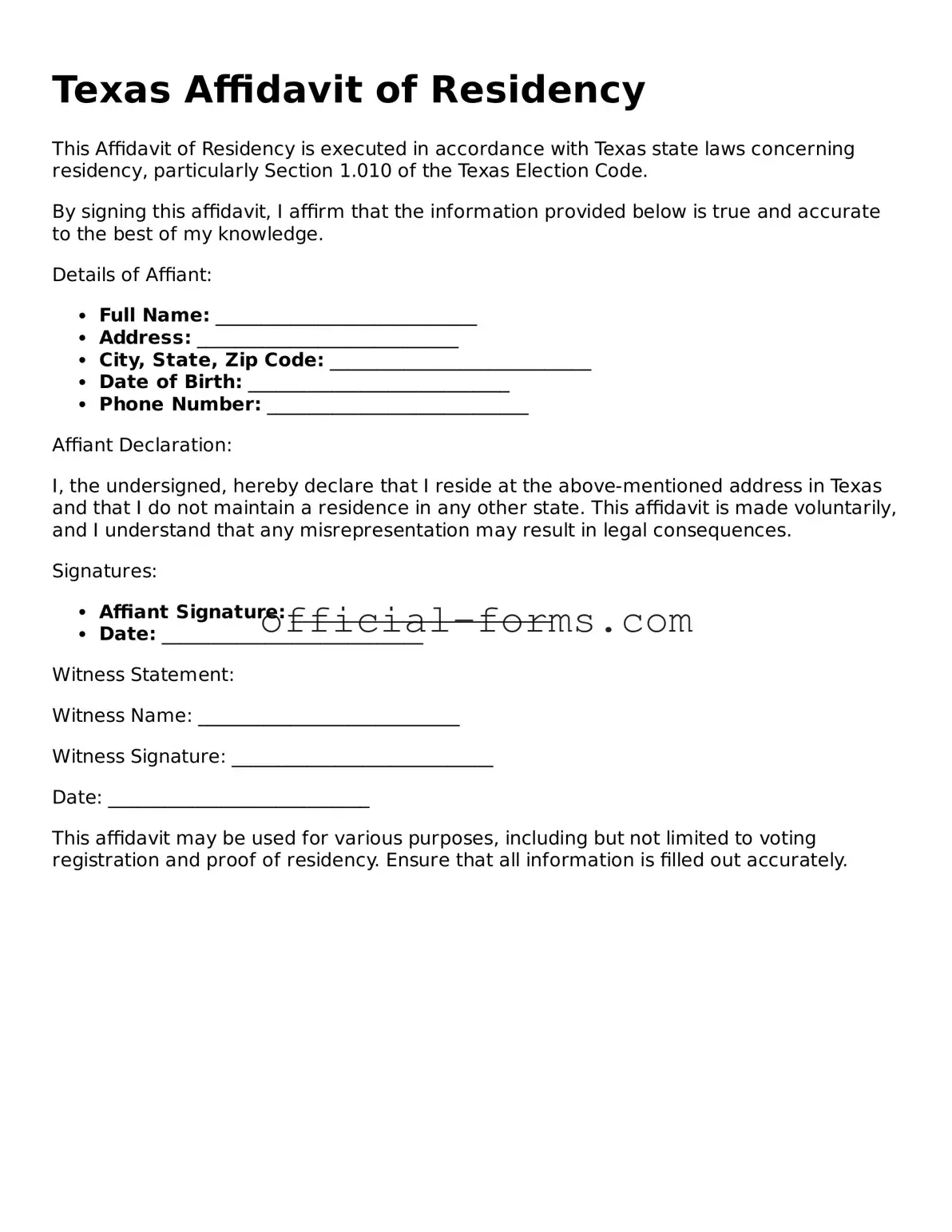In the state of Texas, the Affidavit of Residency form serves as a crucial document for individuals who need to establish their residency for various purposes, such as enrolling in public schools or obtaining certain state benefits. This form is often required when individuals, particularly students, do not possess traditional proof of residency, such as a utility bill or lease agreement. By completing the affidavit, a resident can affirm their living situation and provide necessary details about their address, the duration of their stay, and the nature of their residency. It is important to note that this document must be signed in the presence of a notary public, ensuring its authenticity and legal standing. Additionally, the affidavit may include information about the individual’s relationship to the person they are residing with, which can further clarify residency claims. Understanding the implications of this form is vital, as it plays a significant role in accessing educational resources and other essential services within the community.
